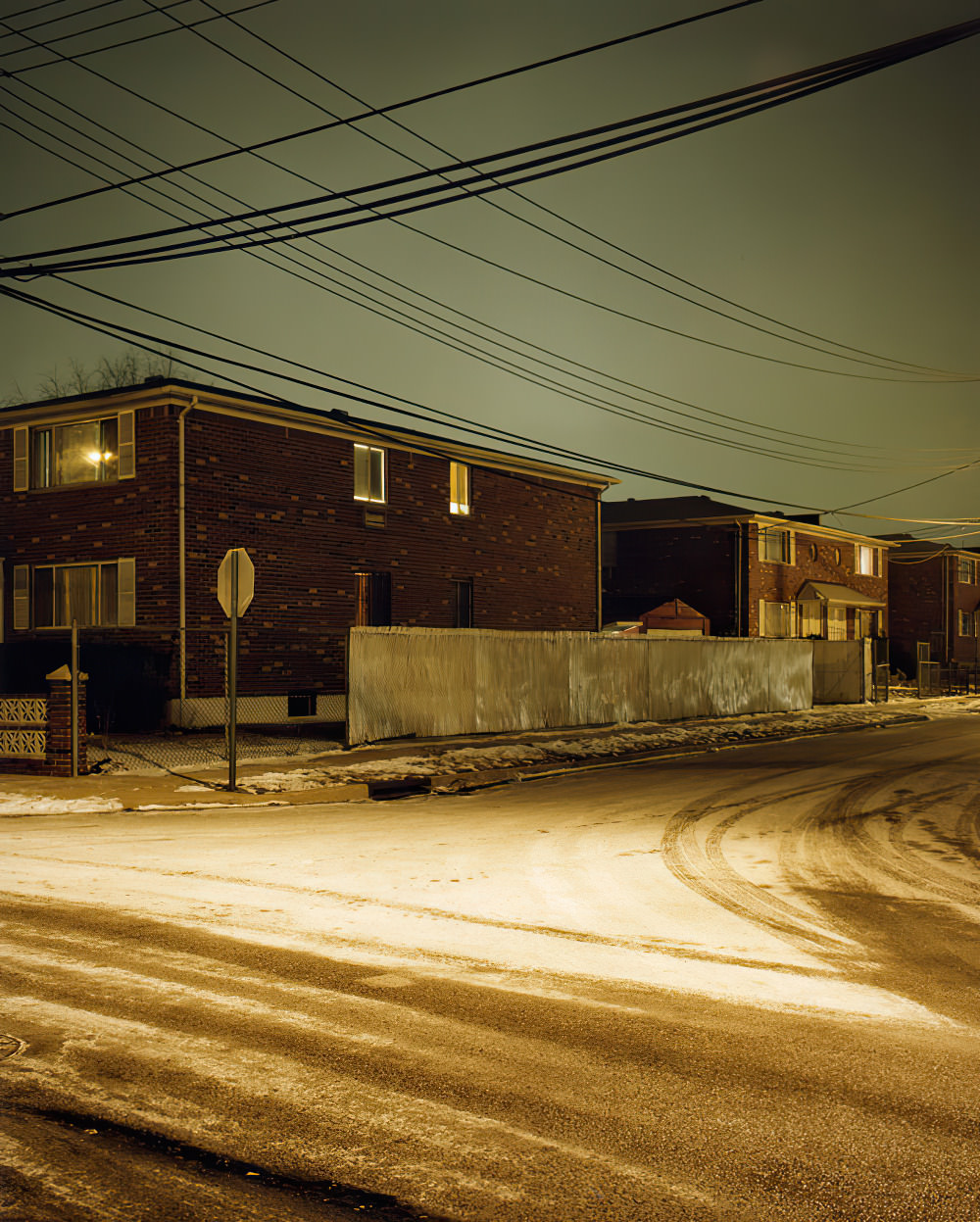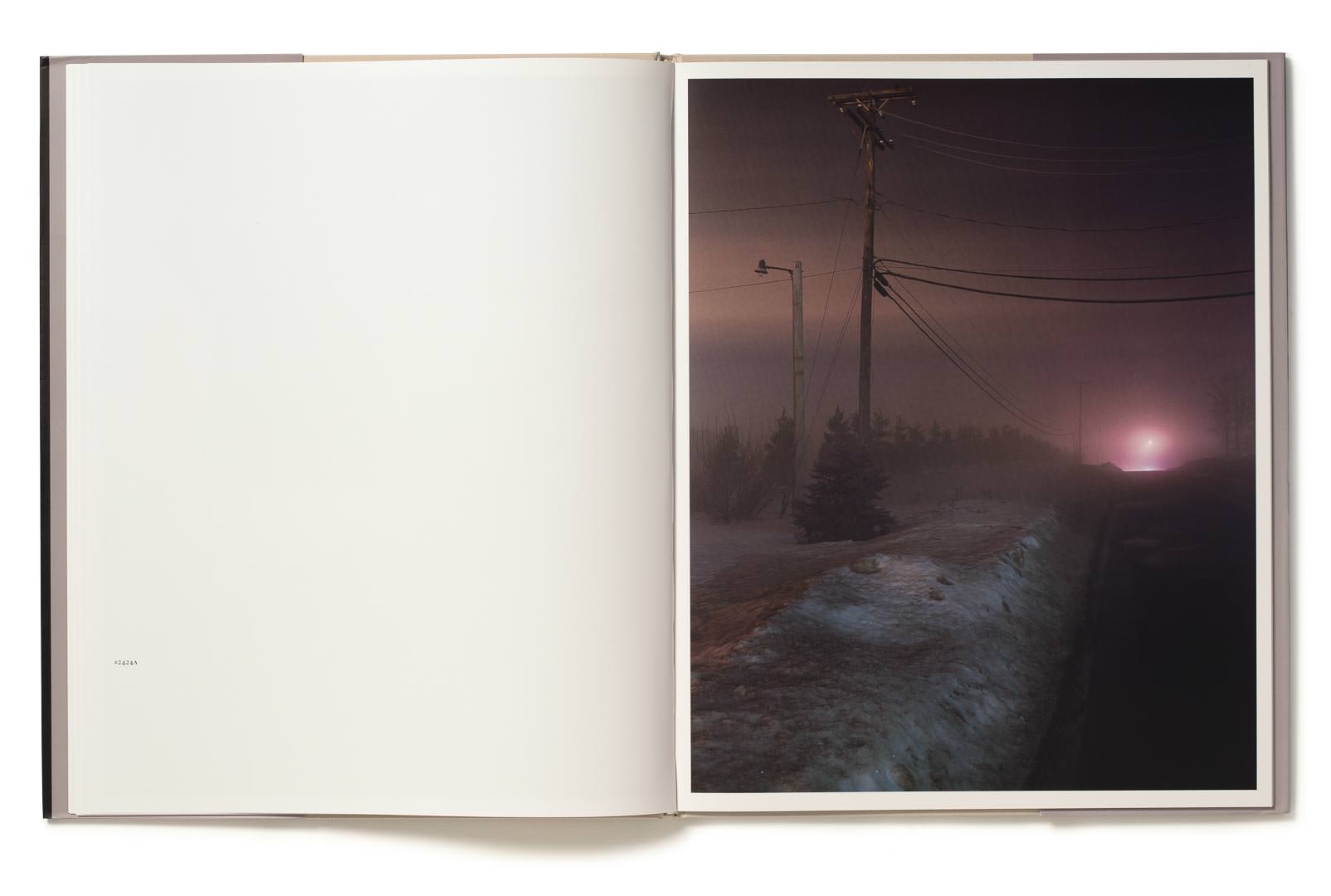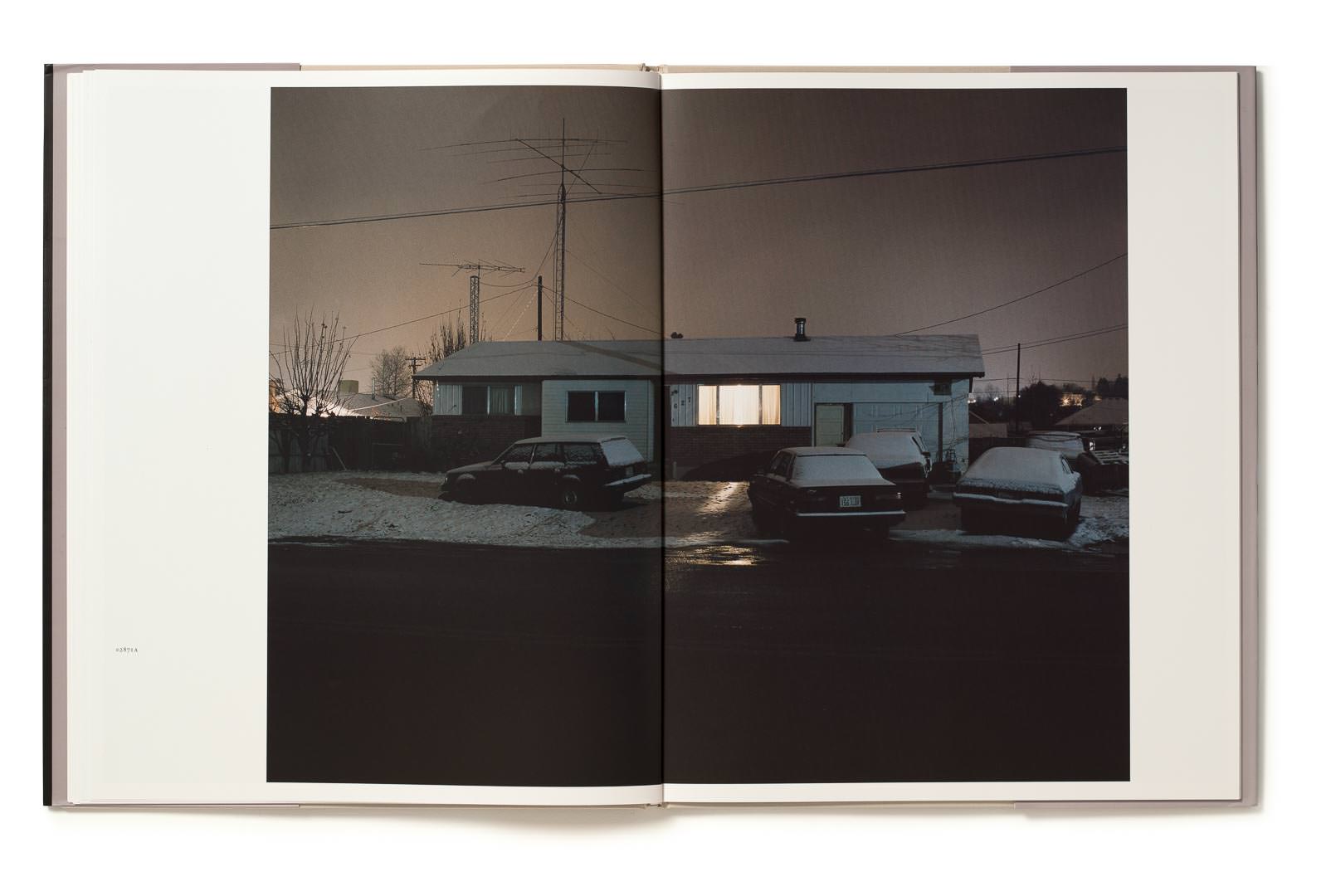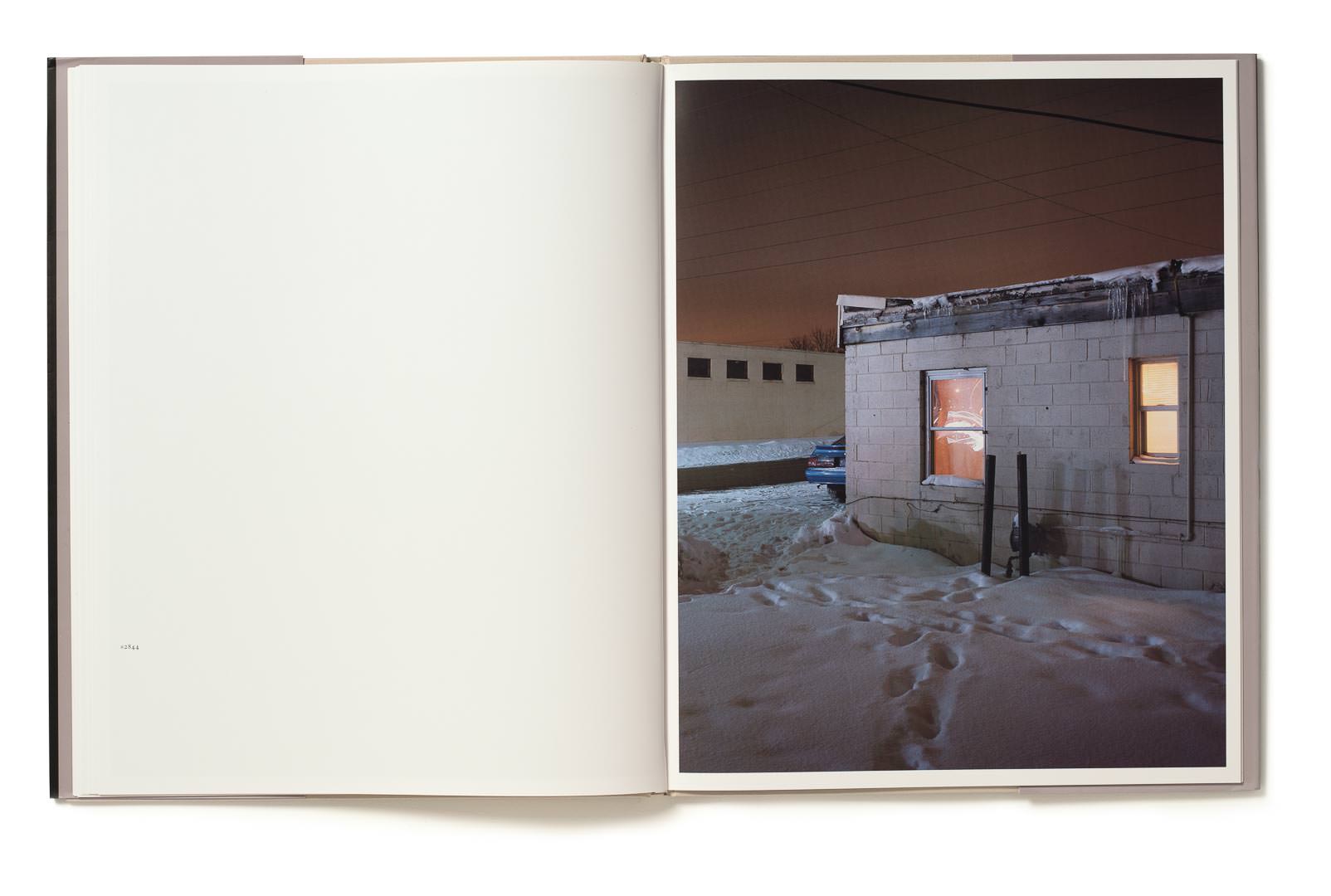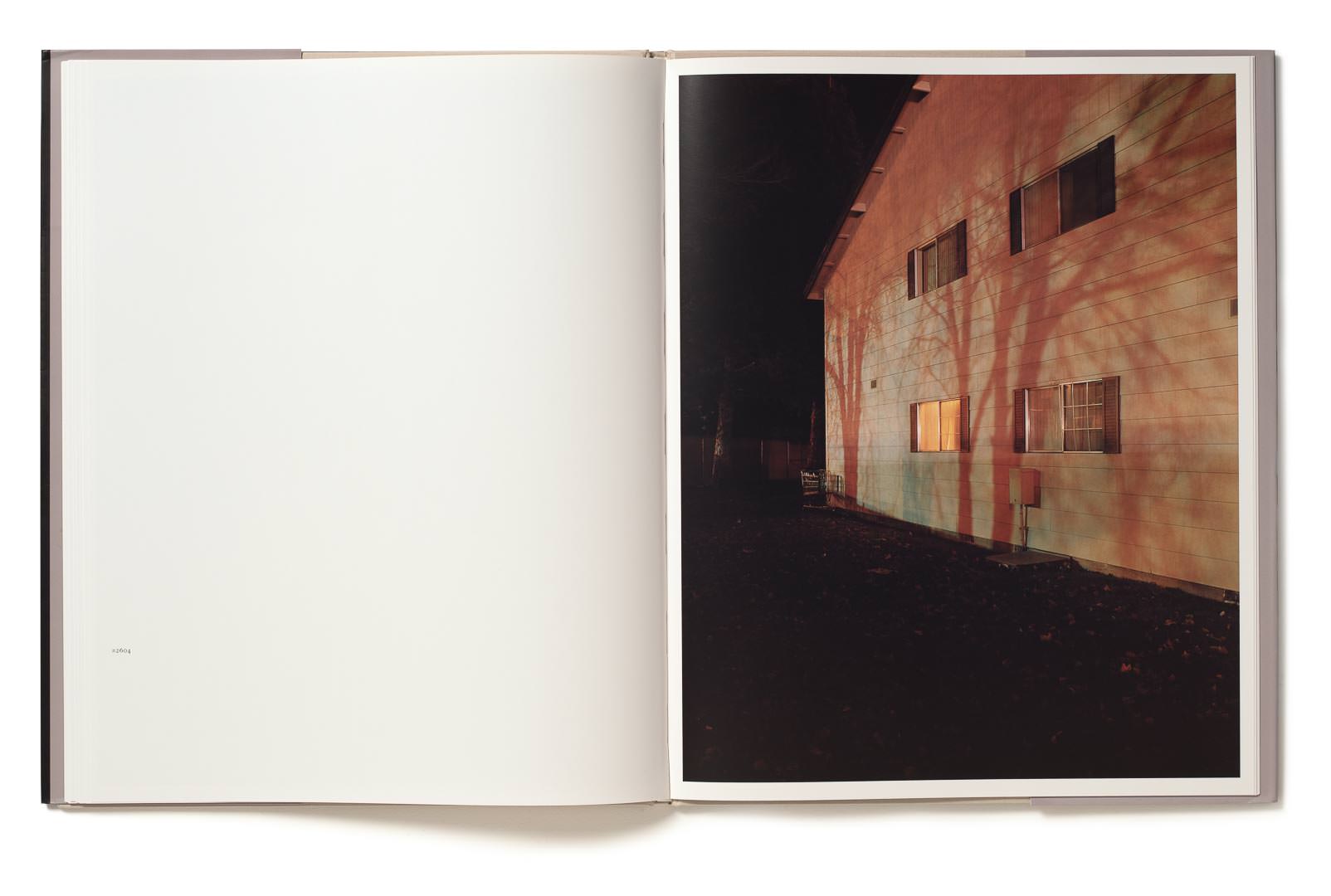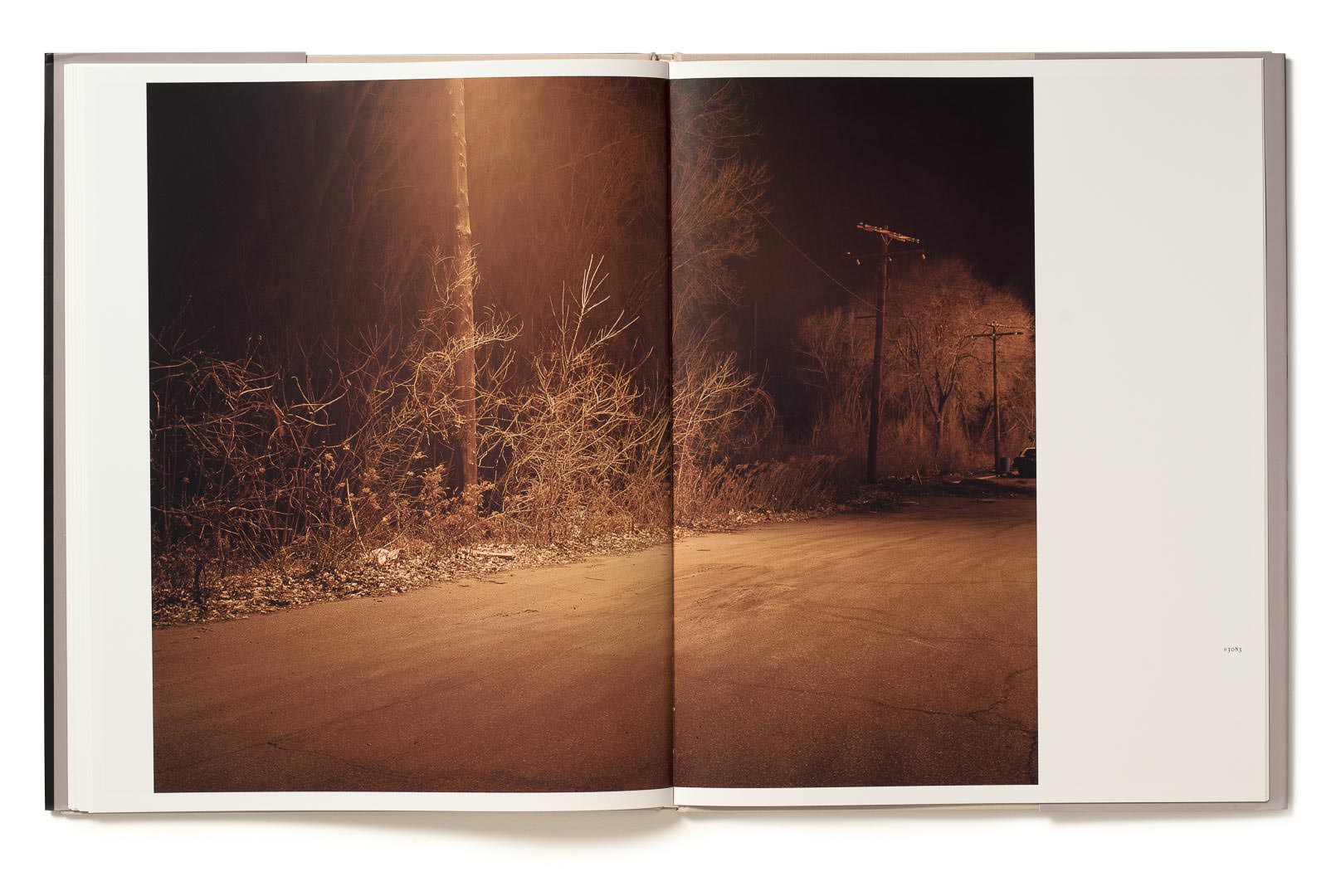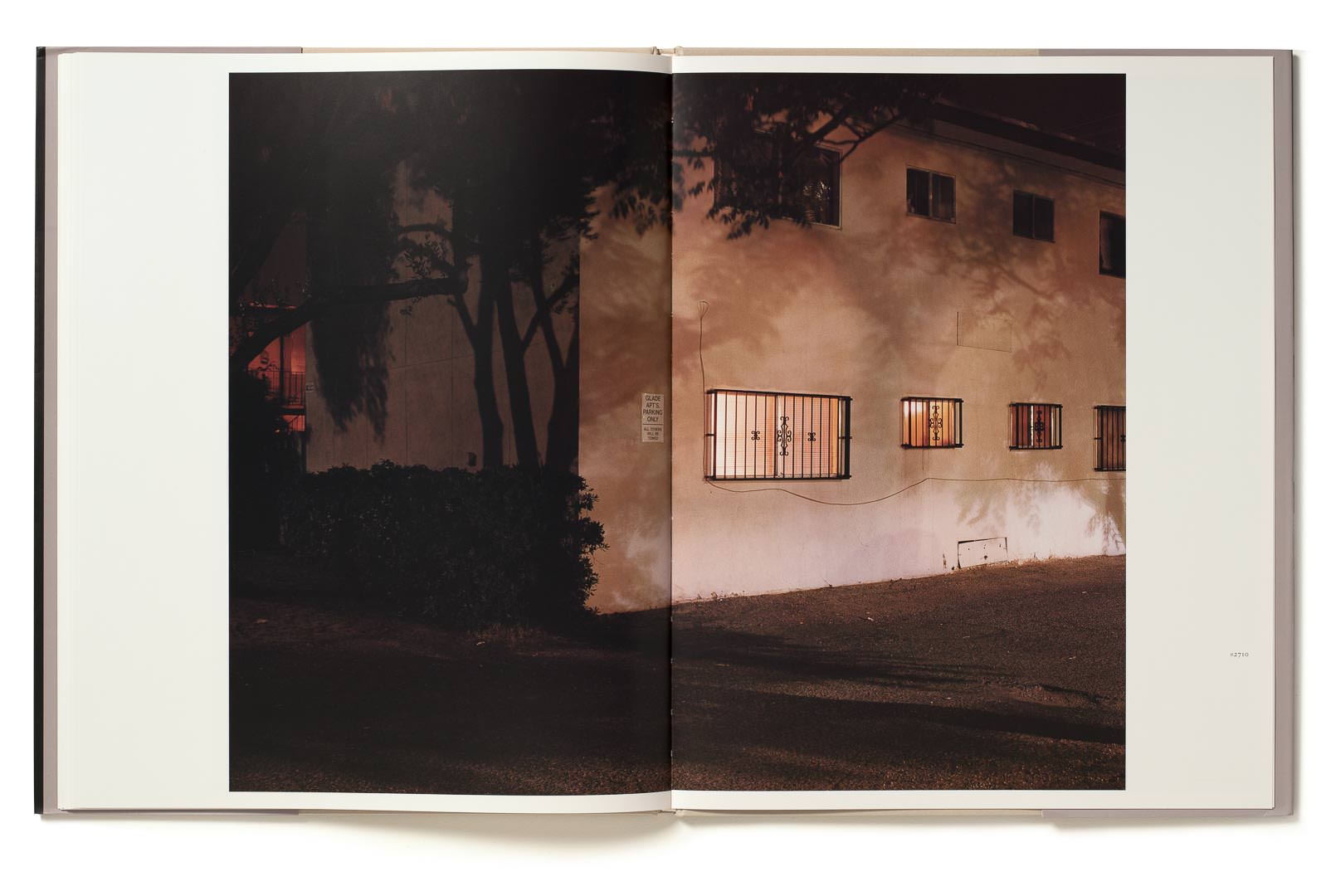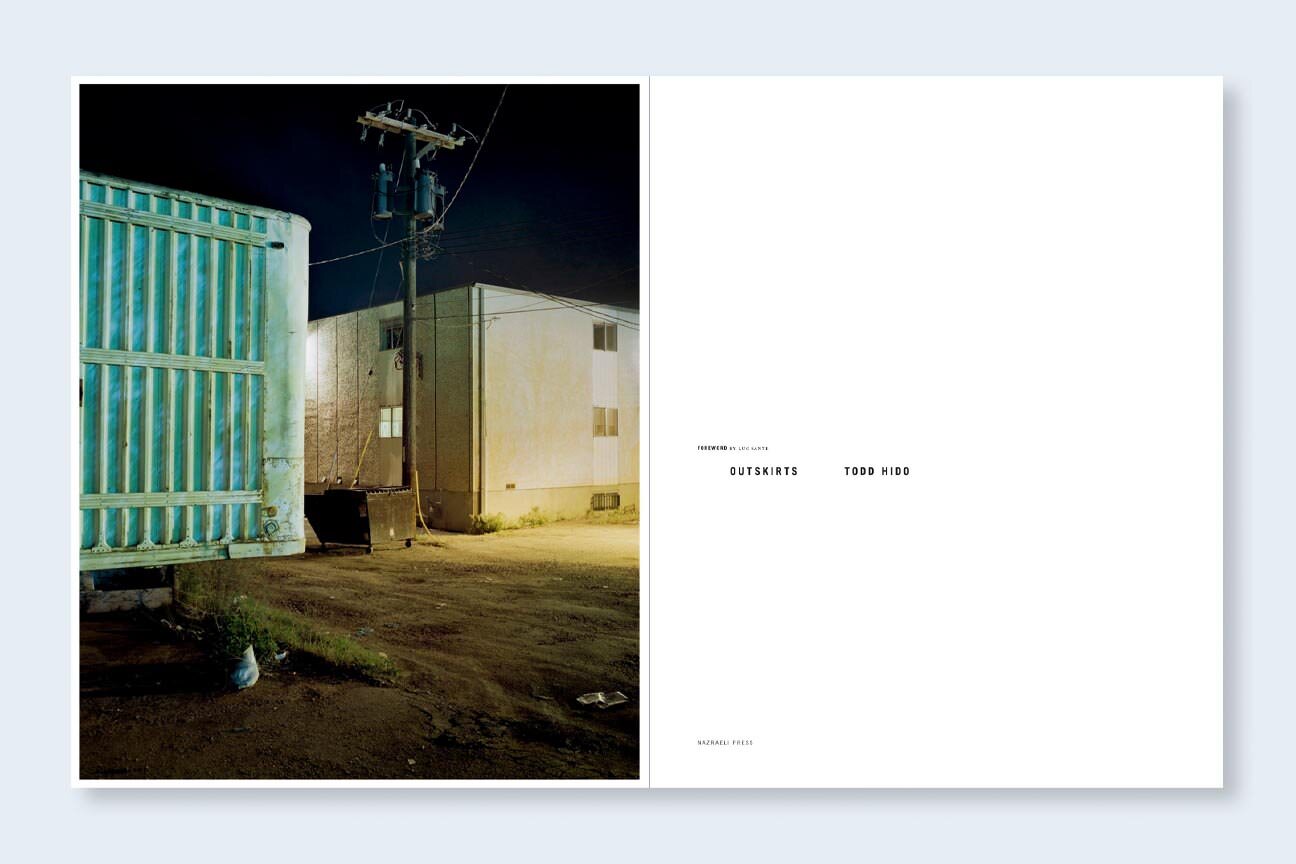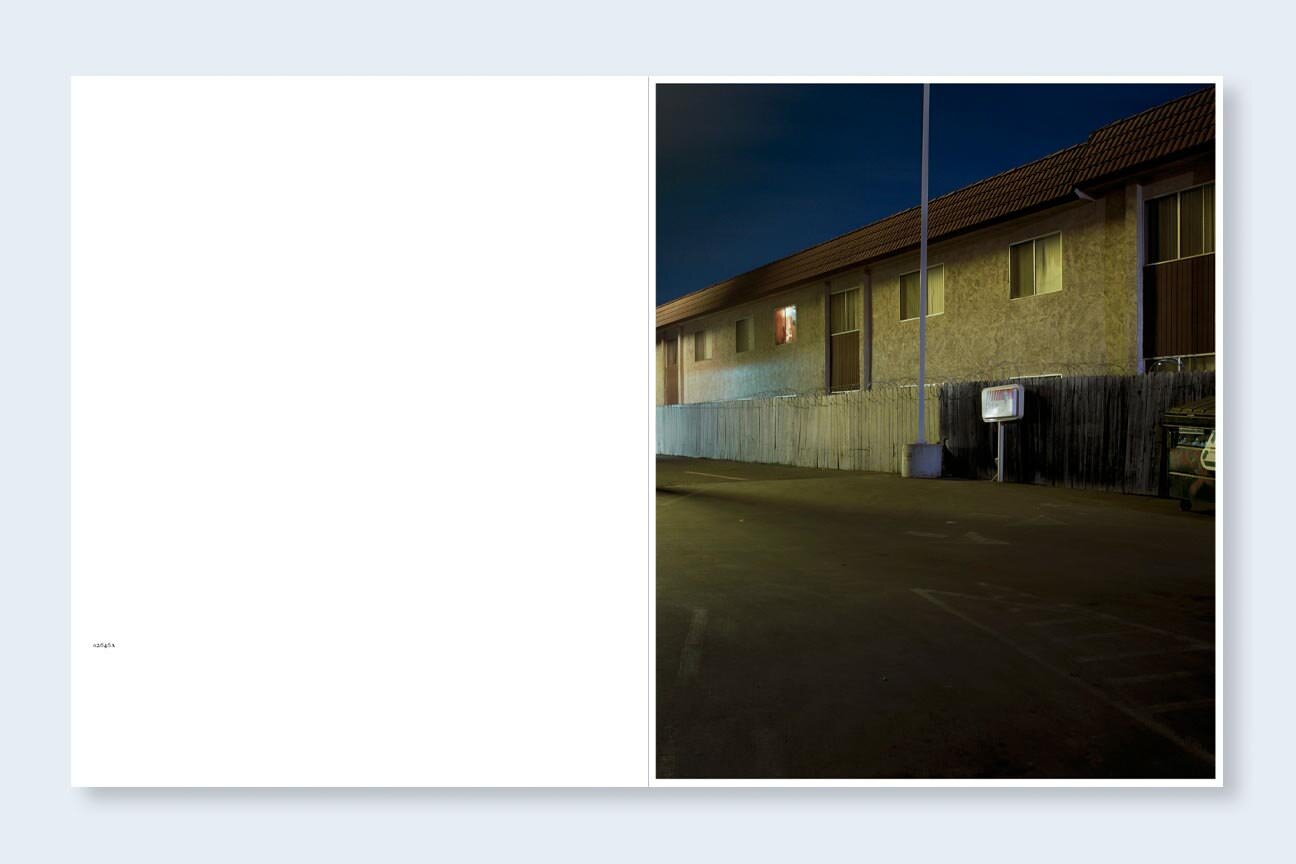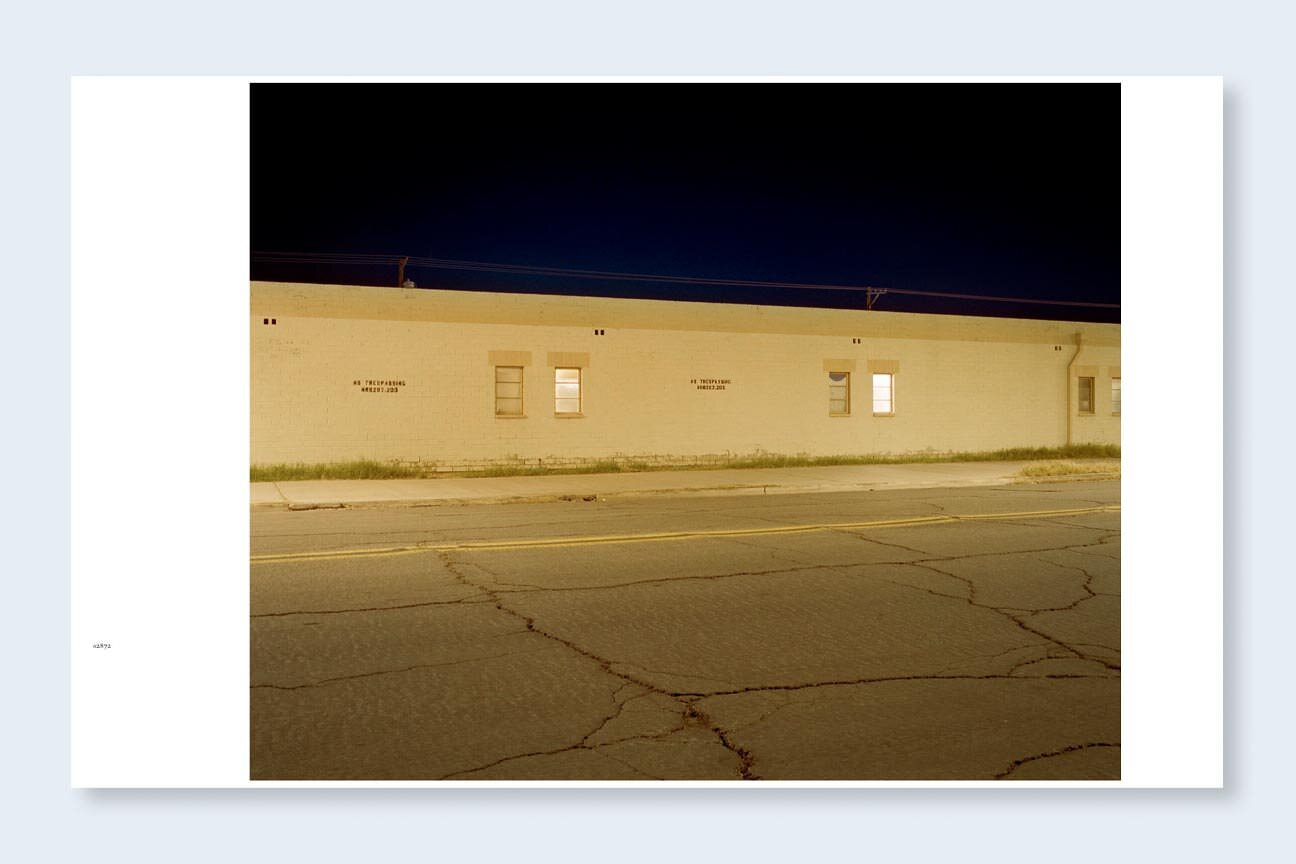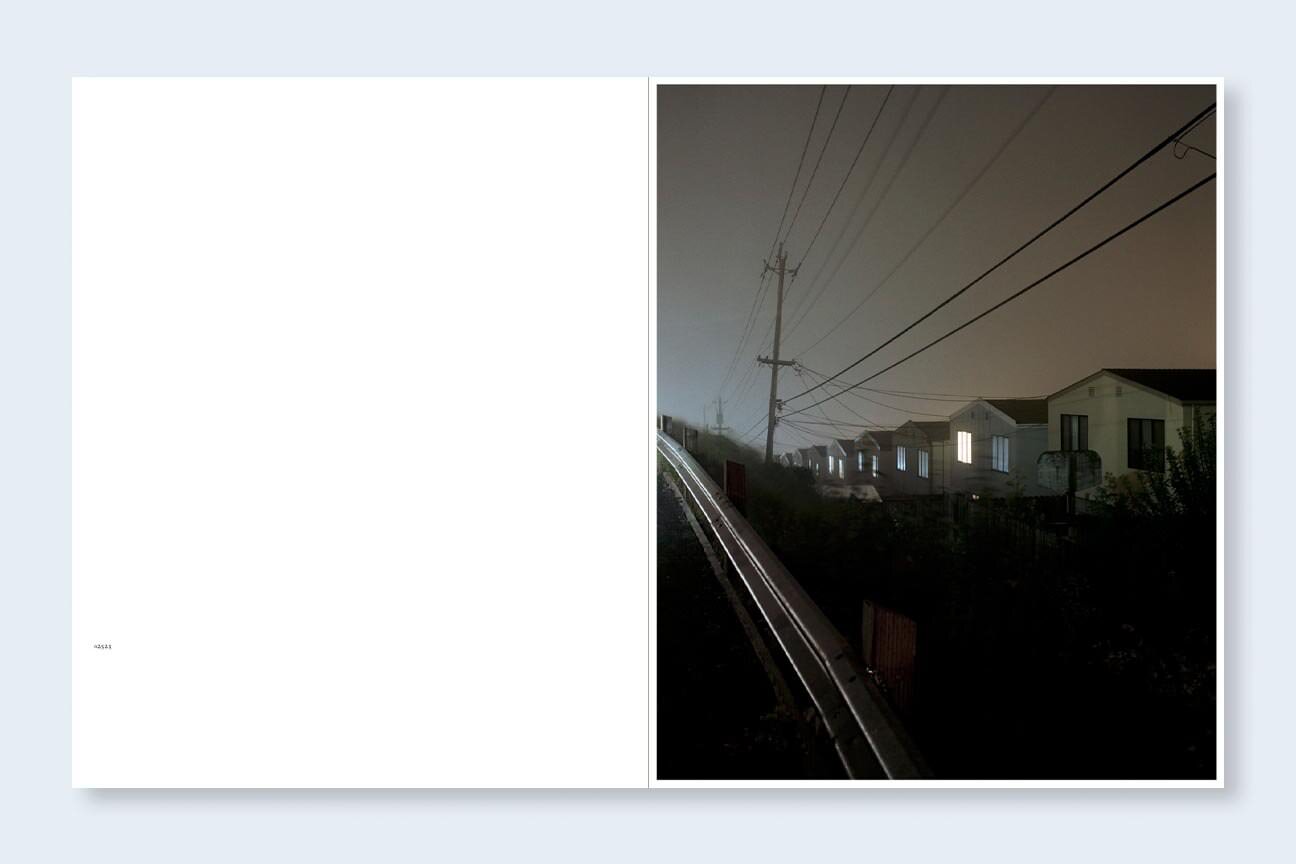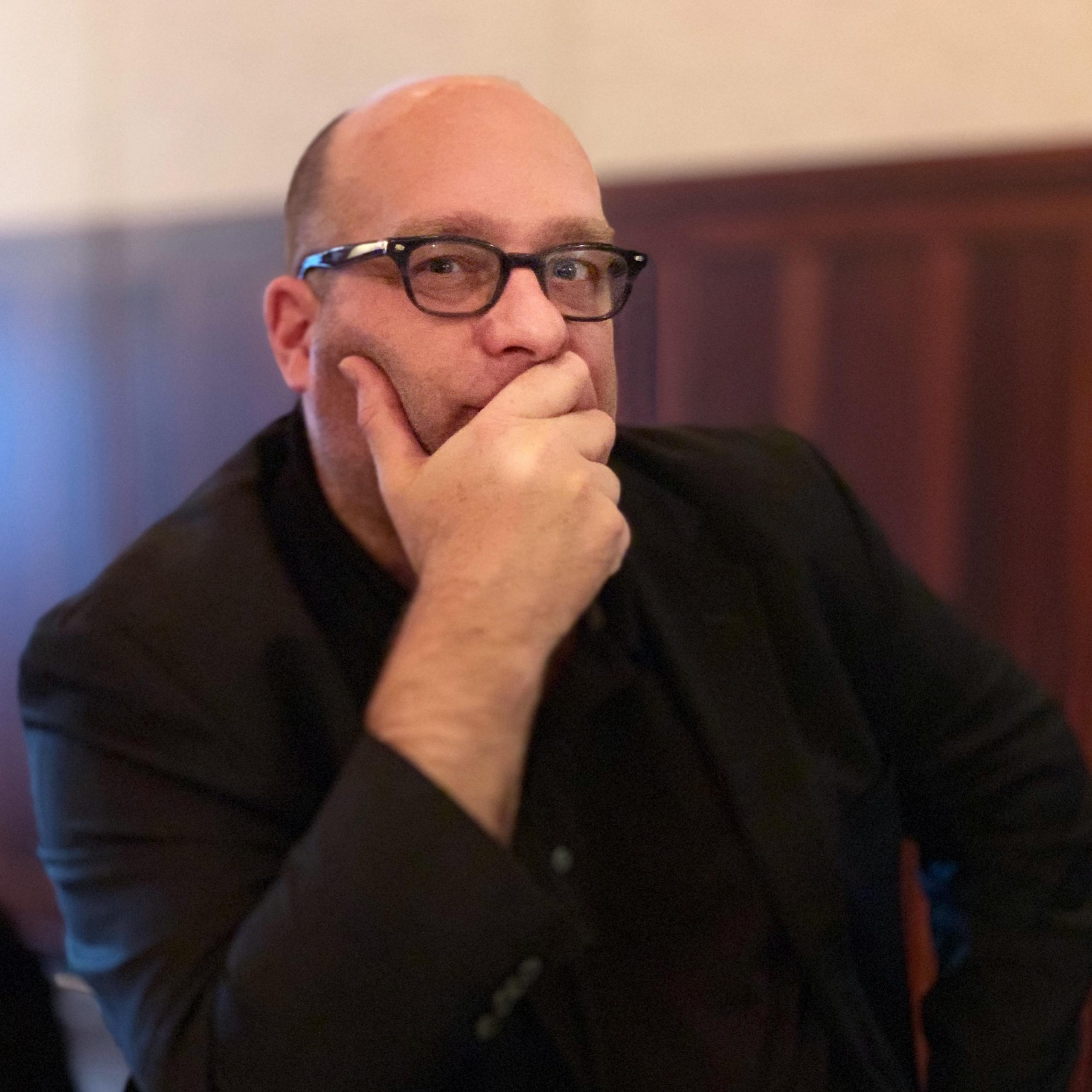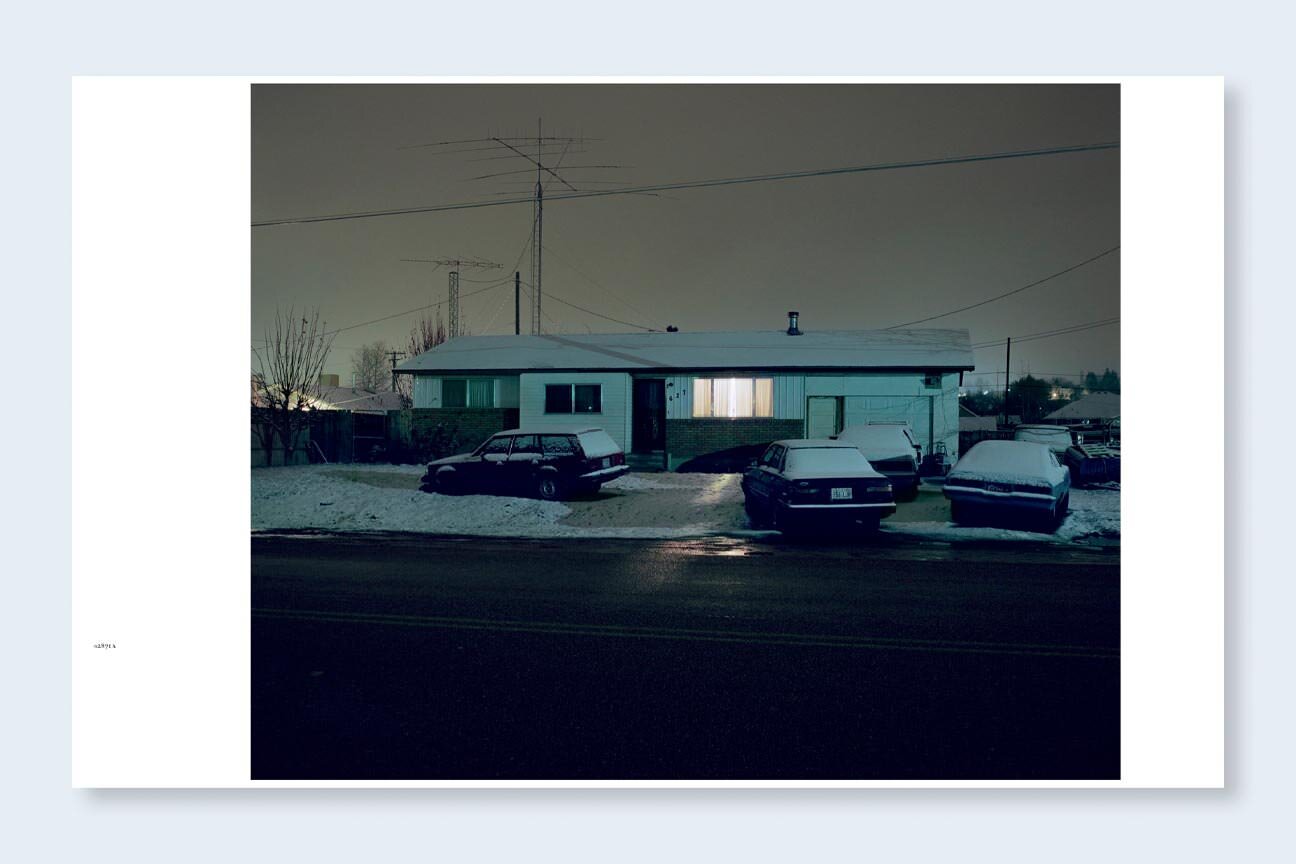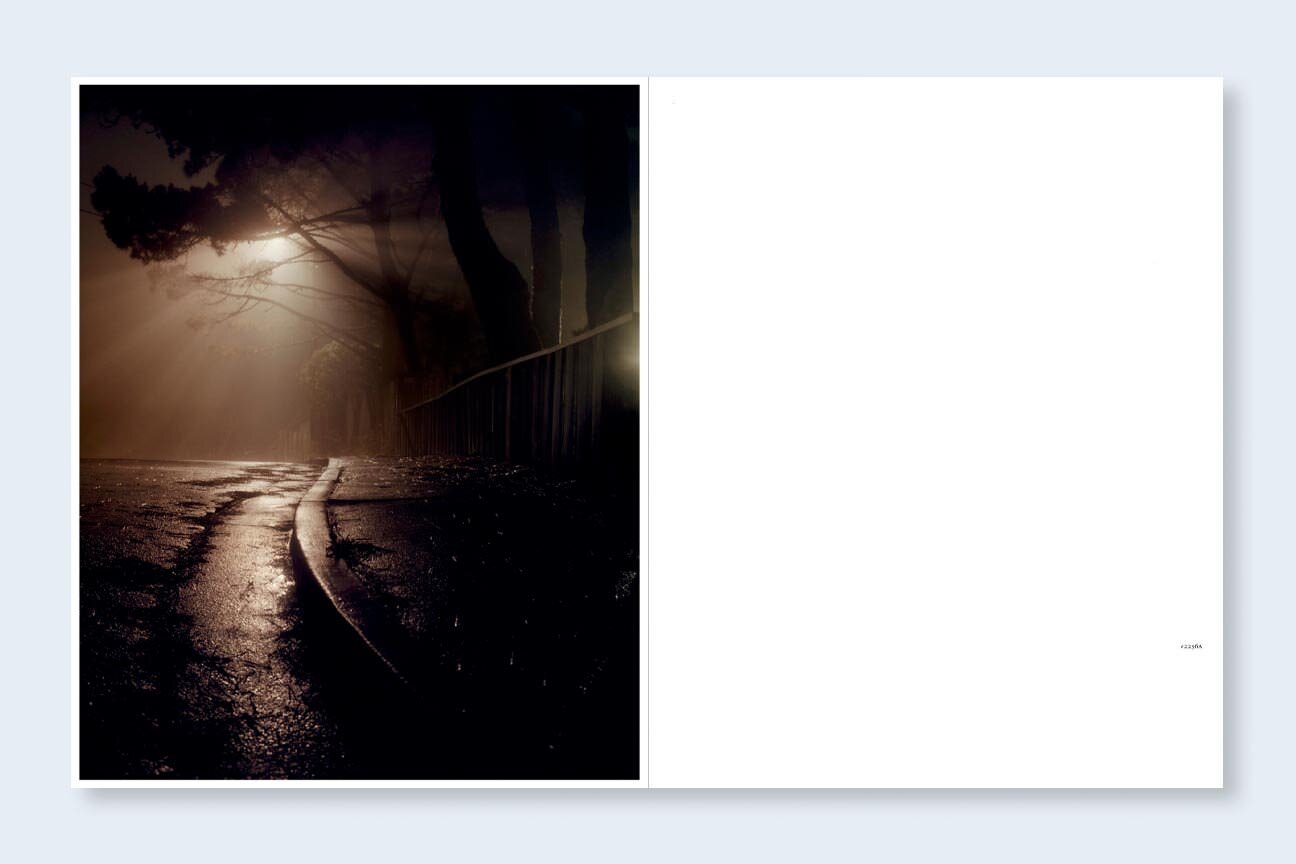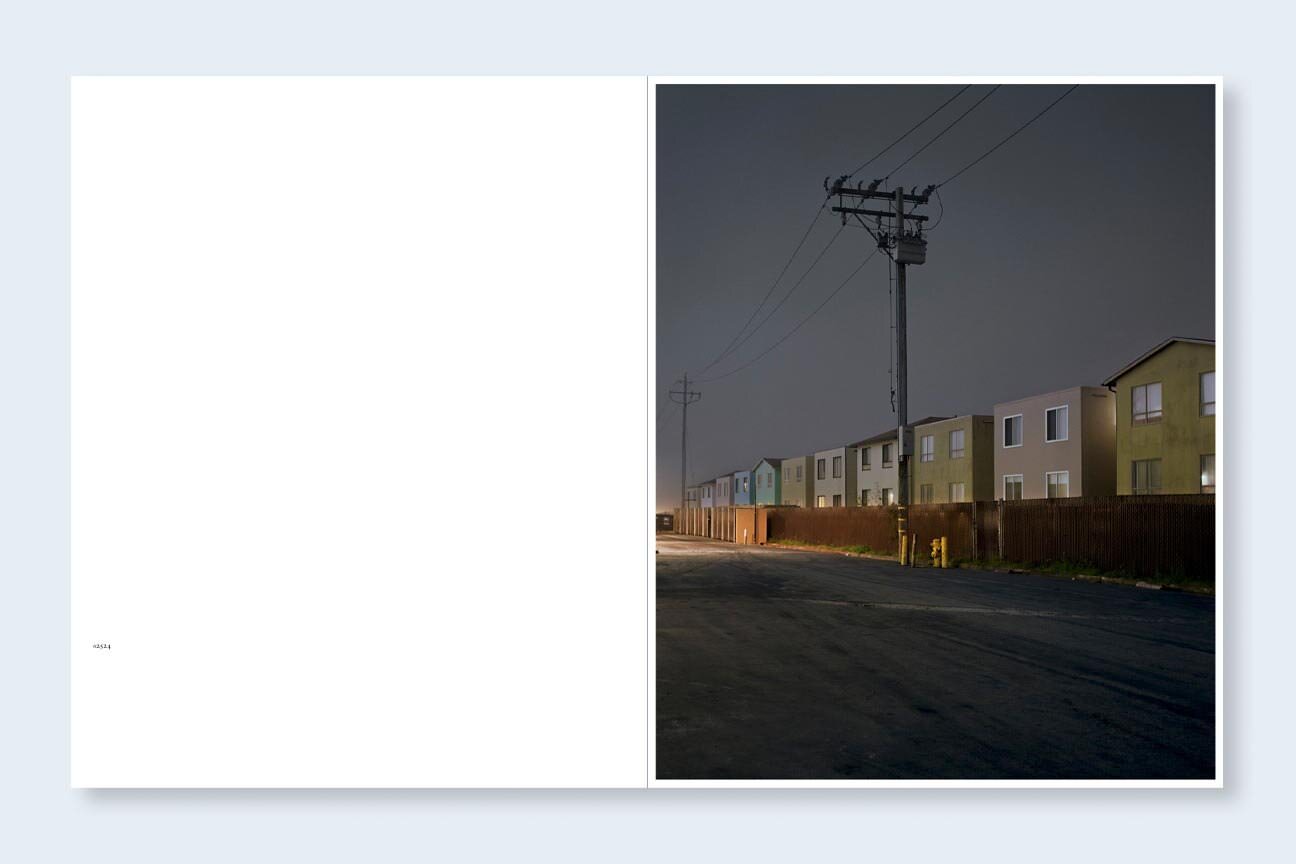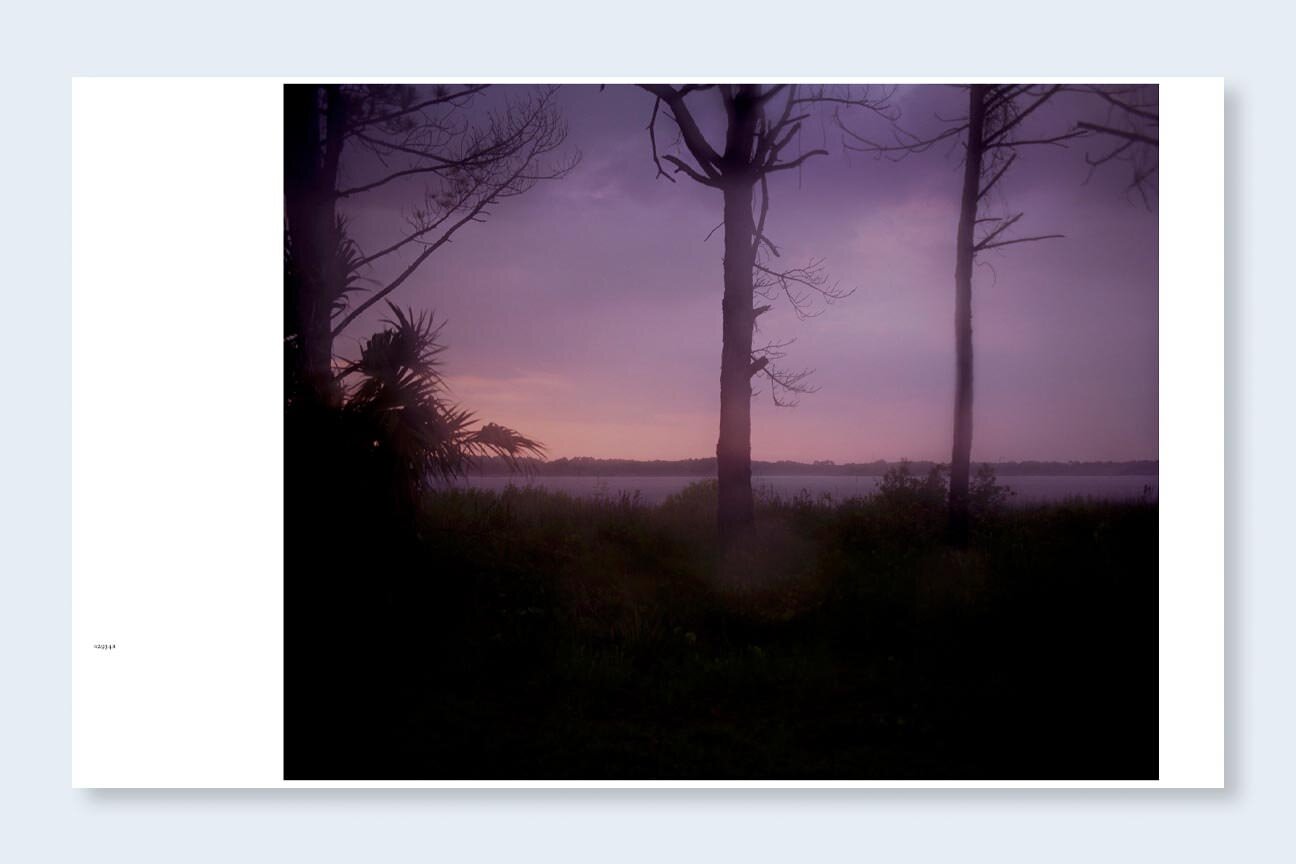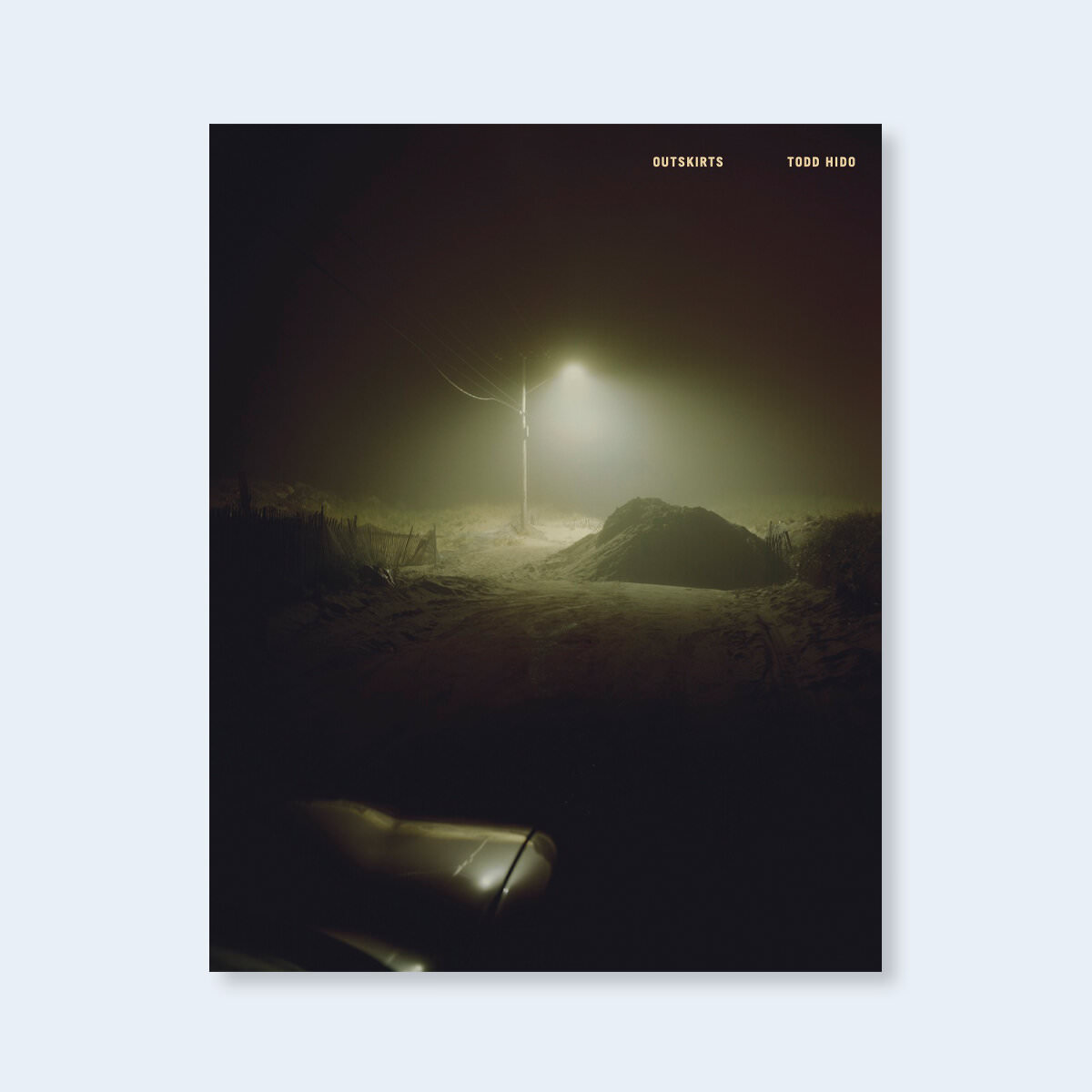Todd Hido: Outskirts
“Todd Hido finds the poetry in that strangeness, which consists of all the matter implied but unsaid in the margins of thrillers. It lurks in the high-tension wires, the high-intensity lights, the leafless trees, and ambitious weeds, the hurricane fences and concrete knee-walls, the red night sky of light pollution. If in these pictures it is forever midnight and you are forever stranded and chilled and at a loss, you still have to pay attention to the way the prowler’s footprints hover in the snow around the window. The jumble of cars around the bungalow may mean that many adults live there, but it may mean something you don’t really want to know about. These pictures might represent views from the undercover surveillance car if the driver drinking endless coffee waiting for someone to leave or to arrive were capable of appreciating the scene. The silence that permeates these pictures is before or after the fact, or a result of the muffling effects of weather, or else it is permanent, deathlike.” — From the Introduction by Luc Sante.
‘If you want to take a photo, you don’t knock on someone’s door to ask permission,’ Todd Hido says. I’ve tagged along on one of his drives, sitting shotgun as he pulls off of main roads to take the ‘unscenic’ routes, so to speak. It doesn’t matter the city we’re in, because he drives along the anonymous streets, choosing views that could be ‘anywhere’ in America, and, more importantly, ‘at any time.’ As always in his process, Hido is in search of something — ‘insatiable’ in that search, he says, ‘even if I can’t name exactly what I’m looking for.’
Published in 2001, House Hunting is, on the one hand, a portrait of a certain America at that specific moment in history: this is an economically downtrodden place, dark and empty homes with the dirty laundry barely packed, or homes with the lights on but radiating no warmth. Simultaneously, this is a portrait of America — and specifically, suburban America — from any contemporary post-war decade: a raw look at white paint chipping off of picket fences.
Hido’s work has echoes of the ’70s adolescence he spent in his hometown of Kent, Ohio, a city scarred by the 1970 shooting of four college students by the Ohio Army National Guard during a Vietnam War protest. Then again, the images resonate less for their relationship to the photographer and more for their ability to connect and identify with almost any viewer. These are reserved photographs, overwhelmed with emotion and history, but reluctant to say a word.
‘I take photographs of houses at night because I wonder about the families inside them,’ Hido tells me. ‘I wonder about how people live, and the act of taking that photograph is a meditation.’ House Hunting, therefore, is more question than answer. A rumination without resolution.
It would seem that in order for these pictures to exist, the photographer would need to be a voyeur, but Hido denies secrecy. He says he keeps himself obvious, even when shooting in the dark. When somebody calls the police, he is quick to make the distinction between photographer and criminal. ‘You’re allowed to take pictures in public,’ Hido says. ‘It’s interesting that so many people regard their surroundings as inherently private. Hido heightens that sense of false privacy. Amplifies it, to show the cracks in the edifices.
The scale of House Hunting, 17×13 inches (43×35 cm), initially gave the artist pause when proposed by the publisher. ‘I wasn’t sure about it. I didn’t want the book to end up crooked or shoved in someone’s bookshelf.’ Instead, the scale of the book demands a confrontation with its 26 carefully selected photographs, edited by Hido himself, a practice he insists on with each of his books. In so deliberately paring down the contents of House Hunting, Hido establishes how critical each photograph is in meaning and function. The physical experience of the photographs reinforces the emotional. In 2002, therefore, Outskirts was published as the companion book to House Hunting with the same size, shape, and page count. (Text by Katya Tylevich)
Printed on heavy-weight matte art paper, this new printing of Outskirts surpasses the original printing with a more accurate color rendition and subtle nuances in tone and saturation. It will be an important addition to libraries and collections lacking access to the elusive 2002 edition, which itself solidified Hido’s position in the art world following on the heels of his groundbreaking first monograph, House Hunting.
This new, remastered edition of Outskirts is limited to 3,000 copies.
About the Author
Todd Hido is a San Francisco Bay Area-based artist whose work has been featured in Artforum, The New York Times Magazine, Eyemazing, Wired, Elephant, FOAM, and Vanity Fair. His photographs are in the permanent collections of the Getty, the Whitney Museum of Art, the Guggenheim Museum, New York, San Francisco Museum of Modern Art, the de Young Museum, the Smithsonian, the Los Angeles County Museum of Art, as well as in many other public and private collections. Most notably, Pier 24 Photography holds the archive of all his published works.
He has over a dozen published books; his most recent monograph titled Excerpts from Silver Meadows was released in 2013, along with an innovative B-Sides Box Set designed to function as a companion piece to his award-winning monograph. Aperture has published his mid-career survey entitled Intimate Distance: Twenty-Five Years of Photographs, a Chronological Album in October of 2016. His next book titled Bright Black World will be released by Nazraeli Press in the fall of 2018.
In addition to Hido being an artist, he is also a collector and over the last 25 years has created one of the most notable photobook collections. His library will be featured in Bibliomania: The World’s Most Interesting Private Libraries forthcoming in 2018 by Random House.

